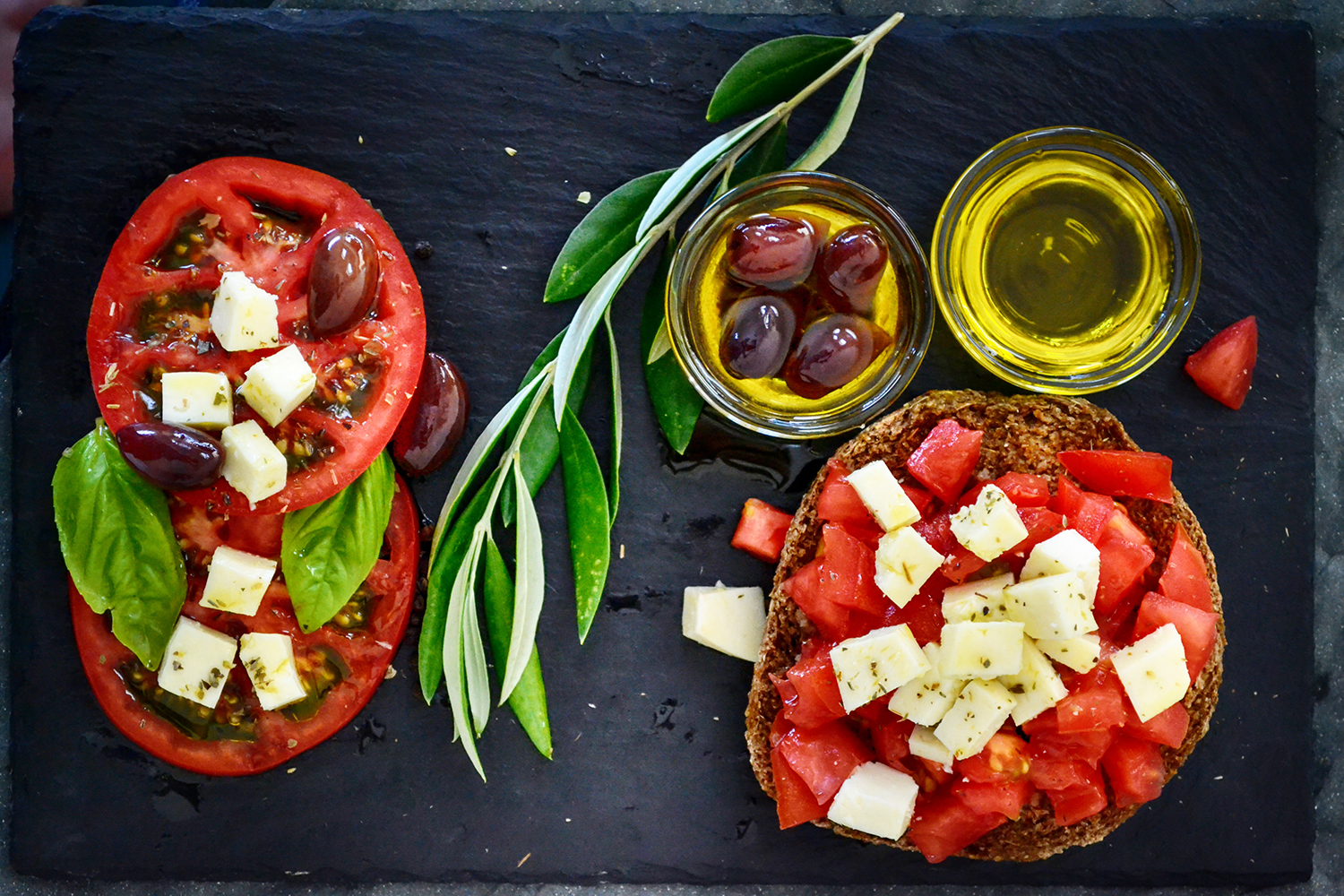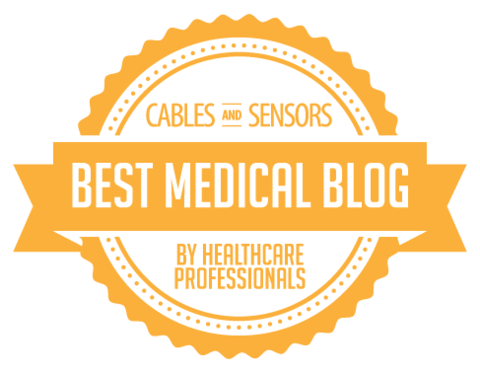Lower Cholesterol – Do you understand your lab results?
It’s very possible your MD orders lab work and you have no idea what or why you’re having blood drawn. Well, let’s clear up the confusion when it comes to your cholesterol labs.
The terms “lipid panel”, “lipid profile”, and “lipoprotein profile” are used interchangeably to order the same set of labs. To make reading this easier, I’m going to use “lipid profile” from here on out.
“Lipid” is simply a medical term for “fat”. A lipid profile measures fatty substances in your blood. Cholesterol is one type of fat.
When you eat food containing cholesterol or when your body produces cholesterol and releases it into your bloodstream, the cholesterol will attach to a protein. This package of cholesterol plus a protein is called a lipoprotein (lipid or fat plus protein). A lipid profile measures lipoprotein levels in your blood.
Lipid profiles include five components:
LDL – “bad” cholesterol
LDL (low-density lipoprotein) cholesterol carries mostly cholesterol, some protein, and minimal triglyercerides throughout your circulation. LDL should be less than 130 mg/dL, ideally less than 100 mg/dL.
VLDL – “bad” cholesterol
VLDL (very low-density lipoprotein) cholesterol contains minimal protein and mainly transports triglycerides. VLDL should be less than 40 mg/dL.
Triglycerides
Triglycerides are a type of fat in the blood, not a type of cholesterol. Triglycerides are frequently used to estimate VLDL (“bad”) cholesterol. Here’s the calculation: triglycerides divided by 5 equals VLDL cholesterol. Triglycerides should be less than 200 mg/dL, ideally less than 150 mg/dL.
HDL – “good” cholesterol
HDL (high-density lipoprotein) cholesterol removes cholesterol from your bloodstream and carries it back to the liver. I like to think of HDL as a vacuum cleaner, picking up cholesterol LDL leaves behind in your arteries, the more HDL the better. HDL should be greater than 40 mg/dL, ideally greater than 60 mg/dL.
Total cholesterol
Cholesterol is essential to bodily functions, such as building cells and producing hormones. However, too much cholesterol will build up on artery walls, form a plaque, and potentially “plug” the artery resulting in a heart attack or stroke. Total cholesterol is calculated from the above components (Total cholesterol = HDL + LDL + VLDL). Total cholesterol should be less than 200 mg/dL.
Do you see how if you only know your total cholesterol, you only have one piece of the lipid profile?
Now, sometimes your results will include ratios or a risk score. Here’s an explanation of what those numbers mean.
Risk Score
A risk score is based on you lipid profile results, sex, age, family history, and various other risk factors. If you have a high risk score for heart disease, it’s best to speak with your MD to evaluate your risk score.
Cholesterol:HDL Ratio
You want a low ratio of cholesterol to HDL. A ratio lower than 4.5 is good, but 2 or 3 is best. You can calculate your cholesterol to HDL ratio by dividing total cholesterol by HDL. For example, your total cholesterol is 195 and your HDL is 55. 195 divided by 55 equals a ratio of 3.5.
It’s actually not your total cholesterol that has the greatest impact on your heart disease risk. The ratio of total cholesterol to HDL is a critical factor. If your total cholesterol is less than 200, but your ratio is 5, you are still at increased risk for developing heart disease.
LDL:HDL Ratio
This ratio compares the amount of bad (LDL) cholesterol to your good (HDL) cholesterol levels. You want a ratio less than 3.5, ideally less than 2.5. To calculate your ratio, divide LDL by HDL. For example, your HDL is 55 and LDL is 100. 100 divided by 55 equals a ratio of 1.8.
Triglyceride:HDL Ratio
A low ratio of triglycerides to HDL is best, ideally less than 2. To calculate your triglyceride to HDL ratio, divide your triglycerides by your HDL. For example, your triglyceride level is 200 and your HDL is 55. 200 divided by 55 equals a ratio of 3.6.
Lipid profiles are commonly ordered to assess your heart disease risk. Your doctor or dietitian will use the results to determine the best treatment to reduce your risk.
A lipid profile is beneficial, because you know your “good” cholesterol level and “bad” cholesterol levels. The interventions that work best to raise HDL and lower LDL differ, so knowing all your numbers helps you make the most effective changes.
You’re probably wondering why a lipid profile isn’t always ordered versus simply checking your total cholesterol (and possibly HDL). Cost and time always play a part and if your risk for heart disease is low, then a quick and less expensive screening makes sense. If you are at increased risk, a more complete assessment (lipid profile) may be more appropriate. Everyone’s situation is unique, so it’s best to discuss what’s right for you with your MD.
Now, to receive regular heart health and weight loss tips from dietitian Lisa Nelson, subscribe to The Heart of Health today!
All the best,
Lisa Nelson RD
Mediterranean Diet to Reduce Heart Disease

I’m sure you’ve heard of the Mediterranean Diet and it’s link to heart health. The Mediterranean Diet emphasizes fruits, vegetables, whole grains, fish, and monounsaturated fats (olive oil).
Those that follow a Mediterranean Diet have a reduced there risk of developing heart disease and dying from a heart attack. Even those that have survived a heart attack and lived to adopt the Mediterranean Diet significantly reduced their risk of a second heart attack and other complications.
In an interesting twist, the native Mediterranean population has gradually adopted a more Western diet leading to negative results. The Mediterranean area has seen an income rise that’s resulted in extra dollars being spent on meat and saturated fat food sources. Over the past 4 decades the average calorie intake in the Mediterranean countries has increased ~30%. So, the once healthy Mediterranean countries are now seeing the weight epidemics the US is familiar with – 75% of the population overweight or obese in Greece, with over half of the population in Italy, Spain, and Portugal following suit. These countries are now supporting the “Mediterranean Diet” as a part of their cultural heritage they can not let die.
Here’s a quick breakdown of the characteristics common to a Mediterranean Diet:
- High intake of fruits and vegetables
- Select whole grains
- Consume healthy fats (canola and olive oil)
- Eat nuts in moderation
- Low red wine consumption
- Limit eggs to less than 4 times per week
- Consume little red meat
- Eat fish regularly
All the best,
Lisa Nelson, RD, LN
eNutritionServices
Be Heart Healthy – Switch to diet soda.
Do you drink a couple cans of regular soda each day? If so, make the switch to diet. Switching from 24 oz (two cans) of regular soda each day to diet soda will save you 280 calories/day and 78 grams of sugar! This change promotes weight loss (~1/2 pound/week) and triglyceride control.
I can “hear you” arguing with me that there’s no way you can tolerate the taste of diet soda. Well, there are now many products on the market comparable in taste to regular soda without the extra sugar and calories. Start experimenting until you find one you like. Or cut out soda all together and opt for water:)
Diet soda doesn’t eliminate the issue of carbonation and tooth decay or the possible link between caffeine and blood pressure. However, diet soda is the better choice in the long run for your heart health and weight loss goals.
All the best,
Lisa Nelson, RD
eNutritionServices
Your Checklist to Lower Cholesterol
Here’s a checklist of the top 8 things you must do if you want to successfully lower your cholesterol and keep it low.
Know your numbers
Have you had a lipid profile? Do you understand the numbers? If you are going to successfully lower cholesterol you need to know your numbers and what they mean. The most effective way to raise HDL is not necessarily the best way to lower LDL.
Evaluate your lifestyle
There are risk factors for high cholesterol that you can not control, such as age, gender, and family history, but there are factors you can control. For example, you can reduce risk by not smoking, increasing your activity, and losing extra weight.
Balance your fats
Reduce unhealthy saturated fats in your diet and replace them with heart healthy unsaturated fats. Total fat intake should be 30% or less of your total daily calories. Out of this 30%, saturated fat should be limited to 7%.
Be active
Physical activity lowers triglycerides and raises HDL (good) cholesterol. Shoot for 30 minutes 5 or more days a week. If you are not currently active, check with your MD before beginning an activity program.
Eliminate trans fats
You need to be food label savvy and watch out for trans fats. Trans fats raise LDL (bad) cholesterol, lower HDL (good) cholesterol, and raise triglycerides. Limit trans fats to 1% or less of your daily caloric intake.
Understand triglycerides
Triglycerides are impacted the most by your simple sugar and alcohol intake. If you are struggling with high triglycerides, you need to use a different strategy to get your cholesterol under control.
Increase dietary fiber
A high fiber diet is necessary for heart health. You need 25-35 grams of dietary fiber daily, especially soluble fiber. For every 1-2 grams of daily soluble fiber intake, LDL (bad) cholesterol is lowered 1%.
Add omega 3 fatty acids
For heart health and lower cholesterol, you want to improve the ratio of omega 3 to omega 6 fatty acids. Omega 3 fatty acids are involved in the regulation of heart rate, blood pressure, and blood clotting.
Receive a step by step plan to promote heart health with a Mini Diet Makeover. As a special New Year’s bonus you’ll recieve a complimentary copy of the Calorie Counter for Dummies. Learn more here – https://www.lisanelsonrd.com/minidietmakeover.html
All the best,
Lisa Nelson RD
How to Lower Cholesterol in 8 Simple Steps
A Heart Friendly Starbucks?
I may have some good news for Starbucks lovers.
Normally, the high sugar, high fat, high calorie beverage and menu items offered by Starbucks were reasons to steer clear if you struggle to lower triglycerides, lower cholesterol, or shed extra pounds.
Starbucks is typically not the best place to grab a quick breakfast with a Frappuccinno, while scanning the daily paper.
Simply selecting a Grande Frappuccino and Cranberry Orange Muffin would start your day with a whopping 850 calories and 30 grams of fat!
In the past Starbucks has not embraced the idea of offering more nutritious items. They did remove trans fats and started offering nonfat milk this past year, but there is still plenty of room for improvement.
The good news is Starbucks has decided to revamp their breakfast menu to offer six heart friendly breakfast options. The goal was a menu with fewer calories, more protein, more fiber, and more fruit.
New menu selections include:
Apple bran muffin – 330 calories, 8 grams of fat, 7 grams fiber
Baked berry stella – 280 calories, 9 grams of fat, 6 grams fiber
Power Protein plate with peanut butter – 330 calories, 16 grams fat, 5 grams fiber
Chewy fruit and nut bar – 250 calories, 10 grams fat, 4 grams fiber
Perfect oatmeal – 140 calories, 2.5 grams fat, 4 grams fiber
These new options provide reduced calories and fat grams, while boosting dietary fiber content. All good moves if you are looking to be heart friendly.
You still need to use your head when choosing a beverage. Starbucks is not removing its’ high calorie, fat, and sugar beverage options. One of the best choices is a simple Caffe Americano (15 calories, 0 grams fat).
So, if you enjoy the Starbucks ambiance, you’ll now be able to enjoy a heart healthy breakfast, too. Hopefully, the taste of the new menu items lives up to the flavor of their coffee!
To receive regular heart health and weight loss tips from dietitian Lisa Nelson, subscribe to The Heart of Health ezine.
Do I need to be concerned about high HDL levels?
My LDL is 50, my HDL is 160 and my triglycerides 90. Do I need to be concerned about my high HDL levels?
The above question is one I recently answered for a visitor to The Health Central Network. I thought readers of this blog may be interested in the answer as well, so here it is.
HDL is the good cholesterol and does not contribute to arterial plaque that leads to heart disease. HDL actually does the opposite and reduces the plaque lining your artery walls. A high level is a good thing and reduces your heart disease risk. If taking medications, speak with your MD to double check whether your medication is playing a role.
Now, we are learning that there are two different types of HDL molecules and of course one is “good” and the other “bad”. The only way to know which type of HDL you have and your levels is get get an expanded lipid profile. Consult with your MD to learn your options.
All the best,
Lisa Nelson, RD, LN
How to Lower Cholesterol Naturally




